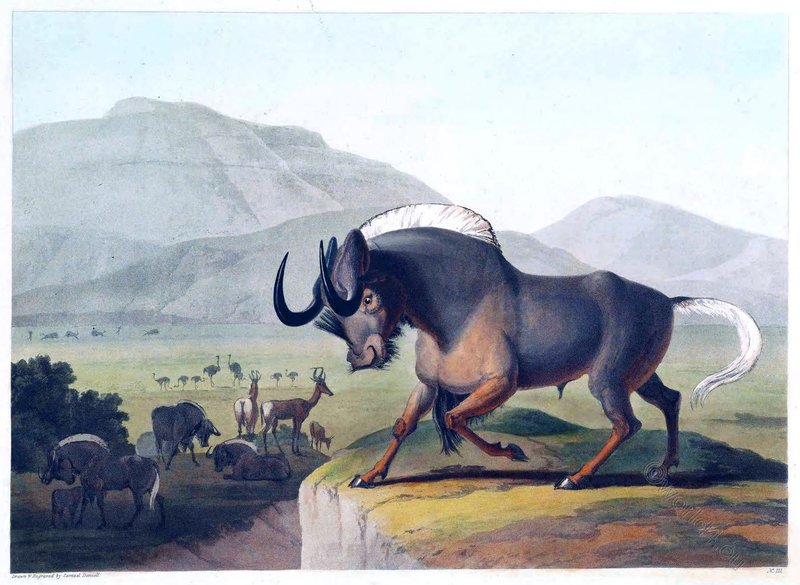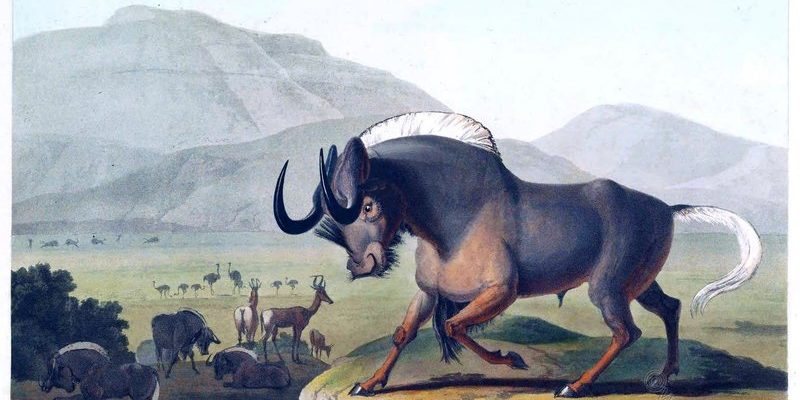
The gnu is often seen as a symbol of resilience and survival, thanks to its incredible strength and adaptability. Picture a great migration—thousands of wildebeests thunder across the plains in search of greener pastures, facing challenges from predators and the harsh environment alike. This imagery isn’t just a spectacle in nature; it resonates with themes of endurance and community, which many cultures have embraced in their stories and traditions.
With that in mind, let’s delve into how the gnu appears in various cultural narratives and folklore. There’s so much more beneath the surface than just the animal itself!
The Gnu in African Folklore
When we talk about the gnu in African cultures, it’s important to first understand its significance in the ecosystems where it lives. Many African tribes have a deep respect for wildlife, and the gnu often represents abundance and the cycle of life. For instance, when the herds migrate, they bring nourishment to the predators, reminding everyone of the interconnectedness of life.
In some African myths, the gnu is seen as a trickster figure. Just as the gnu can sometimes be clumsy—tripping over its own hooves or getting caught in thorny bushes—these stories might illustrate the lessons of humility and the importance of laughter in overcoming life’s challenges. You might find tales where the gnu outsmarts a predator, showcasing wit over strength and demonstrating that intelligence can be just as valuable.
The gnu’s migration, a spectacular event, also tells a grand story of community. These animals travel in large groups, providing safety in numbers. Many African stories highlight the value of working together, reflecting how humans can learn from nature. It’s a beautiful reminder that no one should face life’s challenges alone.
The Gnu in Western Literature and Media
Interestingly, the gnu has made its way into Western literature and media, often as a humorous or eccentric character. The famous children’s book “Gnu: A Love Story” presents a whimsical take on the gnu, focusing on its quirks and personality rather than just its physical traits. This can lead to a deeper appreciation for these creatures, showing that even animals considered less glamorous can have charm and endearing qualities.
In cartoons, such as those from Warner Bros, the gnu often pops up as a goofy sidekick or comic relief. These portrayals might not reflect the true nature of the gnu, but they help introduce the animal to wider audiences in an accessible, entertaining manner. Think about how a carefree gnu might bring laughter and lighten the mood in a serious storyline. This lighthearted representation might spark interest in learning more about the actual animal and its role in nature.
You might even stumble upon documentaries that focus on the gnu’s migratory habits and behaviors. These programs not only highlight the gnu’s place in its ecosystem but also stress the importance of conservation efforts. After all, showing the gnu in its true glory can inspire people to appreciate and protect these animals and their habitats.
The Gnu in Symbolic Representations
Symbols often tell deeper stories, and the gnu is no exception. In many cultures, the gnu embodies qualities like strength, endurance, and community. Picture the image of wildebeests charging together across the plains—this powerful visual can symbolize teamwork and the importance of standing by one another in times of hardship.
In various artworks, the gnu can represent the balance of nature. Some artists choose to depict the gnu alongside other animals, emphasizing the role each plays in the ecosystem. This portrayal serves as a reminder that every creature, big or small, has value. It’s a beautiful reflection of how interconnected all life forms are, urging us to respect and protect our environment.
Moreover, in some spiritual practices, the gnu can symbolize resilience in the face of adversity. Just as these animals migrate through harsh climates and dodging predators, people might find inspiration in their journey. It’s a reminder that even when facing challenges, with a bit of courage and support from our community, we can pull through.
The Gnu in Art and Storytelling
Art has a way of capturing the essence of the gnu, both in traditional and contemporary forms. Many African artists use the gnu as a subject in their paintings and sculptures. These artworks often celebrate the gnu’s strength and grace while also depicting the landscapes of their natural habitat. You can just picture a vibrant painting of a herd silhouetted against a glowing sunset—art that tells a story of life on the savanna.
Storytelling, too, brings the gnu to life. Whether through songs, tales passed down through generations, or modern books and films, the gnu becomes a character that resonates with audiences. In these narratives, the gnu often embodies traits that humans admire—courage, perseverance, and the importance of community support.
In some ways, these artistic expressions help people connect with the gnu emotionally, transforming it from just another animal into a symbol of shared human experiences. It’s as if the gnu is not just living in the wild but is weaving itself into our stories and lives.
The Gnu in Conservation Efforts
As the gnu holds a significant place in culture and folklore, it also plays a crucial role in conservation discussions. With habitat loss and climate change affecting their populations, many organizations are working to protect these animals and their environments. These efforts often extend beyond just the gnu, promoting the health of entire ecosystems.
Conservation stories frequently highlight the gnu’s migrations, which are essential for maintaining grasslands and preventing overgrazing. This connection between culture and conservation is vital; when people understand the gnu’s role in nature, they’re more likely to see the importance of protecting it.
Moreover, educational programs that include gnu-focused content can raise awareness and encourage communities to engage in conservation. By intertwining culture, education, and action, we create a more profound respect for wildlife that can lead to meaningful change.
In the end, the gnu is not just an animal but a thread that connects us to nature, history, and storytelling.
The representation of the gnu in culture and folklore highlights our shared connection to the natural world. From its role in African myths to its quirky appearances in Western media, the gnu embodies themes of strength, community, and resilience. It teaches us valuable lessons about perseverance and the importance of working together in a world filled with challenges.
As we continue to explore stories of the gnu, we also uncover insights into our values and beliefs. Each tale, artwork, or documentary adds depth to our understanding of this incredible creature. It’s a powerful reminder that we are all part of a larger narrative, intricately linked to the earth and each other.
So, next time you think of the gnu, take a moment to appreciate not just the animal itself, but the cultural stories it represents—a true testament to the beauty and complexity of life.

